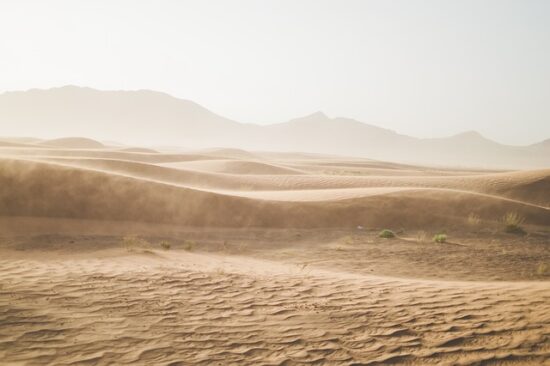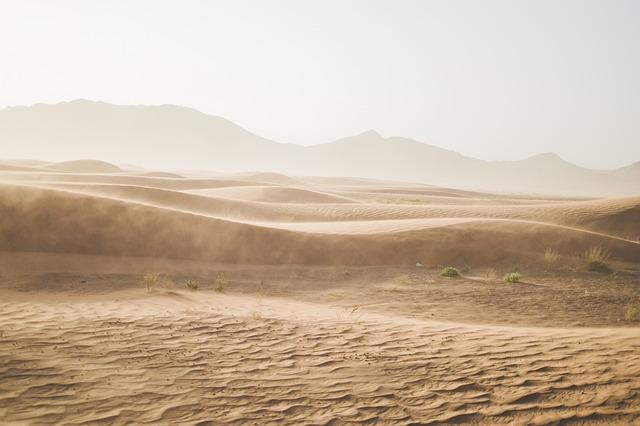Desert Facts For Kids
A desert is simply that part of the land which is dry and barren and that considerably lacks vegetation bearing low amount of vegetation. The water is lost in these regions through the process called evapotranspiration instead of falling as precipitation. The desert-dwelling plants are specifically adapted to such a little amount of water. According to an estimate, deserts receive no more than 250 mm of rain annually. Time to check out all these amazing desert facts for kids!
- Deserts are rich habitats offering diverse number of plants and animals that have adapted to the harsh conditions there. Despite these unpleasant conditions, nearly one-billion people (one-sixth of the total population) are still living in deserts.
- They make up one-fifth of the earth’s land and are therefore found around every corner of the continent.
- The Northern Africa’s Sahara is the largest hot desert in the world with the temperature averaging 122o C Fahrenheit during the day.
- There are deserts that are fairly cooler such as Gobi desert in Asia and other deserts in Antarctica. Deserts can be mountainous.
- The hottest deserts receive no more than one centimeter of precipitation each year.
- Many desert animals are adapted for a tough life including camels, snakes, tortoise, birds, and other land-dwelling creatures. Camel is a fast-runner on desert and can go by several days without food and water. Most animals in these regions are nocturnal, they come out in the later part or perhaps at the end of the day to make sure any extreme temperature. Desert tortoise of the southwestern United States prefers living underground for the major part of the day. Wandering birds are often sighted. Sadly speaking, global warming is becoming a major threat these days in that it changes the ecology of the desert forcing desert animals to move their habitats.
- The major portion of the clean water is even present within the biggest desert of our planet.
- If you analyze the magnitude of arid deserts in our planet, you’ll come to know that almost 1/8th of the surface of our planet is composed of such lands. What’s more, they receive just about ten inches of rainwater every year.
- As compare to humid regions, the barren regions like deserts demand much more water to drink. Humans have to take almost nine liters of water in 24 hours or else they’ll soon expire within just about 48 hours.
- The Sahara Desert is not staying at the same place rather it is going ahead with speed of almost 3.7 miles per year.
- The place of Sahara Desert was once a South Pole probably four hundred and fifty million years back.
- The deserts receive water from rainfall but they lose it quickly rapidly. Likewise, Sahara Desert is losing its water almost two hundred times faster.
- There was absolutely zero rainfall in the Atacama Desert (Chile) for about four hundred years (1570 – 1971).
- There are various deserts in which the sands produce some special sound as if they are singing. As the wind currents pass them, they begin to generate a ‘eerie’ kind of sound.
- Do you know with a staggering size of almost 3.5 million square miles, the Sahara Desert is the biggest scorching desert of the world?
- The magnitude of the Sahara Desert is equal to the size of America.
- Sand and dust storms are not uncommon in deserts especially in those which are not covered with enough vegetation. Sandstorms however occur with much less frequency as compared to dust storms.
- Deserts are not always, as they usually thought, consist of sands. As a matter of fact, not more than 20% of deserts are sandy.
- The driest desert and may be the driest place on earth is Atacama desert where no life seems to exist. The precipitation is normally blocked by the greatest mountainous range, Andes Mountains.
 Classification of Deserts | Desert Facts For Kids
Classification of Deserts | Desert Facts For Kids
Deserts are normally classified into these four categories:
- Hot deserts
- Cold deserts
- Semi-arid deserts, and
- Coastal deserts
Cold deserts are typically shielded by ice or snow for a specific period of the year but desert plants cannot make use of the frozen water. You may find cold deserts in Greenland, Antarctica, and ecozone of North America. The average temperature in winter ranges from 4 degree to minus 2 degree centigrade. It has a fairly fine soil because of the annual precipitation of 6 to 10 inches. Plants in this part of the world grow spiny and are widely spaced.
Semiarid deserts have long been known for their long summers and low rainfall especially in winter. The average temperature remains stable as compared to those of hot deserts, measuring 21 – 27o C. In semiarid deserts nights are cool as they receive mild dew. Plants grow in these deserts are usually silvery and have shiny leaves.
Hot deserts are one of the most inhospitable regions where average temperature may exceed 40o C. They receive only a few drops of rainfall in water. The sand here is well drained and shallow and the plants exhibit deep taproots.
Coastal deserts are located on the western borders of continental land in areas which are dominated by cold currents coming from the polar regions. The average temperature measures around 13o C and 24o C and the soil is well textured. These deserts can be found in southern California, Baja California, Chile, and south-west Africa.
Top 10 Biggest Deserts in the World
- Antarctic Desert
- Sahara Desert
- Arctic Desert
- Gobi Desert
- Arabian Desert
- Kalahari Desert
- Great Basin Desert
- Thar Desert
- Great Victoria Desert
- Patagonian Desert
Types of Plants Grow in Deserts
- Flora
- Cardon cacti
- Saguaro cacti


Leave a Reply